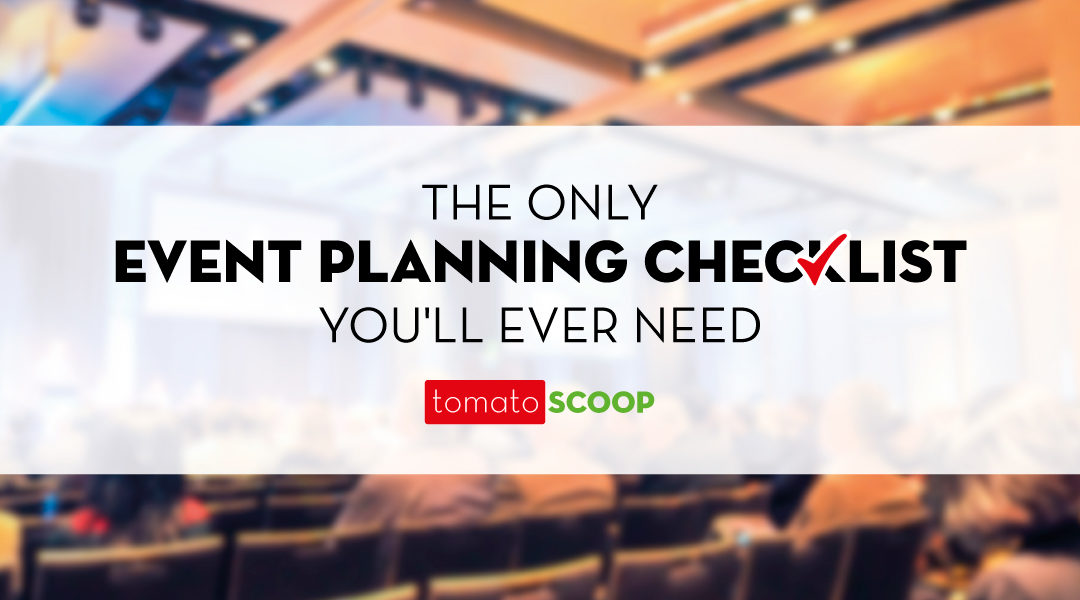Successful event planning involves many elements coming together smoothly. Sometimes, it’s easy to overlook steps or deviate from your ultimate event goals. So, to help you, here’s your comprehensive event planning checklist. This checklist aims to ensure success before, during, and after your event.
Here is your complete event planning checklist to ensure everything is successful before, during, and after your event.

Pre-Event
- Firstly, set Goals: What are your event goals? Why plan the event? What outcomes do you expect? Use our Define Your Goal worksheet to create attainable goals.
- Secondly, identify your Target audience: It’s crucial to identify the event’s target audience. After all, knowing which audience will help you achieve your goals is essential.
- Next, Establish a Budget:While crucial, determining a budget can be hard. When creating your budget, be detailed. Include the item, description, quantity, estimated cost, and actual cost. If you need help, here are some tips for creating an event budget.
- The fourth step involves Crafting a Program: This step combines the first three checklist elements. Create an event agenda that adds value to your target audience and lets you reach your goals while adhering to your budget.
- Then, focus on Speakers: Now you have your program, you can recruit speakers. Source speakers who are industry experts and can captivate an audience.
- Lastly, consider Sponsorship: Are you hosting the event alone or do you need sponsors? Sponsorship can give your event more reach and another engagement dimension. If required, reach out early in the planning stage.
- Marketing
- Start with the Website: Create a simple one-page website with all essential information for potential attendees.
- Then, initiate Social media campaigns: Market your event using paid social media campaigns. Consider using Facebook Ads or LinkedIn Sponsored InMail for your target demographics.
- Additionally, consider Giveaways: Giveaways can promote your brand and event. Consider holding a giveaway of a free event ticket and a branded product as a prize.
- Also, don’t forget about a Press release: Don’t forget about promotions outside of your network. Reach out to different publications to market your event to a wider audience.
- The venue choice is crucial. Secure a venue that meets the needs of your target audience and the event’s goals. Here are some factors to consider when choosing a venue for your event:
- Permits: What permits will you need? Are they easy to get?
- Number of guests: Will your venue accommodate the target number of attendees?
- Room design and furniture: What is the vibe you will be creating for your event? Is it more relaxed and casual or more of a formal environment? Knowing this will help you determine which venue is best.
- Parking: Does the venue have enough parking to accommodate the estimated number of attendees?
- Logistics: Will you and your team be able to move in and out all of the equipment needed for the event quickly and without issues? What about music and sound for the different presentations?
- Location: Is the venue in a location that is easily accessible by your attendees? If not, how will you make it accessible?
- Equipment: Before your event make a list of all of the equipment (and backup equipment) you will need to make sure everything runs smoothly.
- Handouts: What will be in the welcome back for each attendee? Will there be different items for different days of the events?
- Gifts: What promotional merchandise will your brand be giving out to attendees? How is it helping your reach your goals and engage with your target audience? Will you have different branded gifts to give out each day of the event? Will your company be holding any giveaways or competitions to engage attendees even further?
Day of the event
- Organise event staff: The morning of the event should begin with a (brief) group meeting with the entire event staff. The purpose of this meeting should get them excited about the day to come and to ensure they know their responsibilities.
- Set up attendee registration and entertainment space: This is your attendee’s first impression of the event, so you need to set the right tone from the start.
Post-Event
- Clean up: Your staff will be exhausted by the end of the event, but it’s important to respect the venue you used and clean up every piece of the event.
- Thank you letters or gifts to staff and volunteers: The event wouldn’t have been possible without them and you should thank them for all their hard work.
- Thank you presentation for sponsors: Also, prepare a thank you presentation for sponsors: If your event had sponsors involved, you should prepare a presentation with the final numbers and KPIs for the event, and what those results mean for those brands.
- Follow-up engagement plan with attendees: How will your brand further engage with attendees even after the event is over?
- Debrief with key stakeholders to review goals and plan for improvements: Upon the completion of the event, you should plan a meeting to discuss with the organization team the following:
- Overall feelings about the event
- Did the event reach your goals?
- What can be improved upon for the next event?




